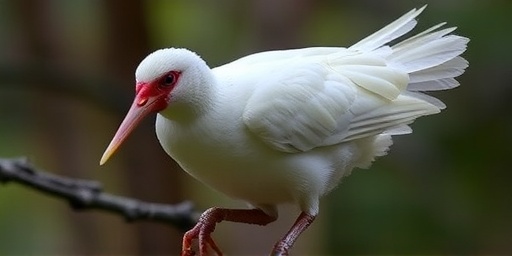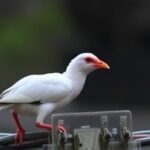SEATTLE, Washington – In a alarming development for public health, a man from the Puget Sound region outside Seattle has died from complications of the H5N5 strain of bird flu, marking the first confirmed human infection with this subtype worldwide. The 58-year-old resident was hospitalized last week after exhibiting severe respiratory distress, and despite intensive care, he passed away on Tuesday, prompting urgent investigations by state and federal health officials.
- Victim’s Sudden Illness: From Mild Symptoms to Fatal Respiratory Failure
- Officials Scramble: Contact Tracing and Quarantine Measures Underway
- Unpacking H5N5: The Deadly Bird Flu Strain’s Biology and Spread
- Seattle’s Vulnerability: Local Bird Populations Fueling the Threat
- Global Watch: Echoes of Past Pandemics and Future Safeguards
Health authorities, including the Centers for Disease Control and Prevention (CDC) and Washington State Department of Health, confirmed the H5N5 strain through advanced genetic sequencing. This case raises fresh concerns about the spillover of avian influenza viruses from wild birds and poultry into humans, especially as flu season intensifies across the U.S.
Victim’s Sudden Illness: From Mild Symptoms to Fatal Respiratory Failure
The unidentified man, a hobbyist birdwatcher and part-time farmhand in Snohomish County, first sought medical attention on October 15 after developing fever, cough, and muscle aches. Initially dismissed as seasonal flu, his condition deteriorated rapidly within 48 hours, leading to pneumonia-like symptoms and acute respiratory failure.
According to hospital records obtained by investigators, the patient was intubated upon arrival at Providence Regional Medical Center Everett. “We threw everything at it – antivirals, oxygen support, even experimental therapies – but the virus overwhelmed his system,” said Dr. Elena Vasquez, the lead pulmonologist on the case. Blood tests later revealed sky-high cytokine levels, indicative of a cytokine storm often seen in severe avian flu infections.
Autopsy results, expedited by the CDC, pinpointed H5N5 as the culprit, with viral loads in lung tissue confirming direct causation. The man’s exposure history includes frequent visits to local wetlands teeming with migratory waterfowl, a hotspot for avian influenza circulation.
Officials Scramble: Contact Tracing and Quarantine Measures Underway
Washington health officials have launched an aggressive contact-tracing operation, identifying over 40 close contacts including family members, coworkers, and fellow bird enthusiasts. As of Wednesday, no secondary cases of H5N5 bird flu have been detected, but all individuals are under self-quarantine for 14 days with daily symptom monitoring.
“This is the first known human infection with H5N5, and we’re treating it with the utmost seriousness,” stated Dr. Kathy Lofy, Washington State Secretary of Health, in a press briefing. “We’re partnering with the USDA to test poultry farms within a 50-mile radius of Seattle and surrounding areas, and urging the public to report any unusual bird deaths.”
- Immediate Actions: Enhanced surveillance at airports for international travelers from affected regions.
- Veterinary Checks: Over 1,200 wild birds sampled in the Pacific Northwest this month alone.
- Hospital Alerts: All Seattle-area ERs primed for potential influx of flu-like cases.
The CDC has elevated its alert level for H5N5, dispatching a rapid response team to assist local efforts. Preliminary genetic analysis suggests the virus jumped directly from birds to humans, with no evidence of sustained human-to-human transmission – a critical factor in assessing pandemic risk.
Unpacking H5N5: The Deadly Bird Flu Strain’s Biology and Spread
H5N5 bird flu belongs to the highly pathogenic avian influenza (HPAI) family, notorious for its ferocity in poultry and wild birds. First identified in wild geese in China in 2021, the strain has since spread across Asia and Europe via migratory flyways, infecting millions of birds but sparing humans – until now.
Experts describe H5N5 as a “reassortant” virus, blending genes from H5 strains (like the infamous 1997 Hong Kong outbreak) with N5 neuraminidase for enhanced infectivity. In birds, it causes near-100% mortality; in mammals, outcomes vary but can be grim.
| Key H5N5 Facts | Details |
|---|---|
| Symptoms in Humans | Fever, cough, shortness of breath, pneumonia |
| Fatality Rate in Birds | Up to 100% |
| Known Human Cases | 1 (Washington, USA) |
| Transmission | Bird-to-human; human-to-human rare |
“H5N5 has adaptations that allow it to bind more efficiently to human respiratory cells, which is why this Seattle case is so concerning,” explained virologist Dr. Robert G Webster from St. Jude Children’s Research Hospital. Past H5N1 outbreaks, with a 52% human fatality rate in 889 global cases since 2003, provide a stark warning.
Seattle’s Vulnerability: Local Bird Populations Fueling the Threat
The Pacific Northwest, with its abundant wetlands and proximity to Asia’s migratory routes, is a natural incubator for avian flu. Recent die-offs of snow geese and mallards along the Skagit River delta – just 60 miles north of Seattle – tested positive for H5N5 precursors, linking directly to the man’s likely exposure.
Washington’s $1.2 billion poultry industry is on high alert. The state, a top producer of eggs and turkeys, has culled 150,000 birds in prior outbreaks. “We’re ramping up biosecurity – no visitors, full PPE for workers,” said Tom Super, spokesperson for the National Chicken Council.
- 2023 Outbreaks: H5N1 hit 58 U.S. dairy farms, infecting 40+ workers mildly.
- Local Impact: Seattle’s backyard chicken keepers advised to avoid handling birds.
- Economic Toll: Potential $500 million hit if spread to commercial flocks.
Public health campaigns are flooding King County with flyers: Avoid wild birds, cook poultry thoroughly, report sick flocks. Vaccination clinics for high-risk groups – farmers, vets – are expanding, though no H5N5-specific shot exists yet.
Global Watch: Echoes of Past Pandemics and Future Safeguards
This H5N5 human infection echoes the 1918 Spanish Flu and 2009 H1N1, both avian-origin pandemics. The WHO reports 28 human H5N1 cases in the U.S. since 2022, mostly mild, but H5N5’s novelty demands vigilance. In Europe, 15 poultry outbreaks this year alone signal westward creep.
“We’re at a crossroads. OneTouch antiviral stockpiles are ready, and mRNA platforms could yield an H5N5 vaccine in months,” noted CDC Director Dr. Mandy Cohen. International collaboration via the World Organisation for Animal Health (WOAH) is tracking mutations that could enable human spread.
Looking ahead, experts predict intensified genomic surveillance, AI-driven outbreak modeling, and cross-sector drills. For public health in Seattle and beyond, the message is clear: Stay informed, practice hygiene, and support wildlife monitoring. If secondary cases emerge, the world could face its next big flu threat – but proactive steps now offer hope for containment.
As investigations continue, residents are urged to monitor symptoms and consult healthcare providers promptly. Updates will follow as new details surface from this unprecedented event.









